| Bacuripari - Garcinia macrophylla | |
|---|---|
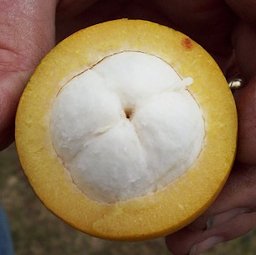 Fig. 1 Garcinia macrophylla  Fig. 2  G. macrophylla leaves  Fig. 3  Leaf attachment 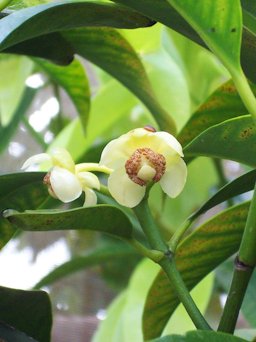 Fig. 4  Close-up of female flower 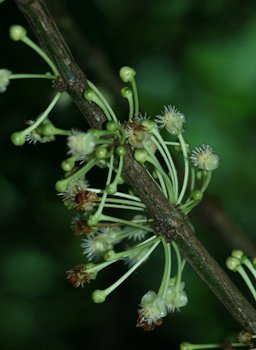 Fig. 5  Close-up of male flowers 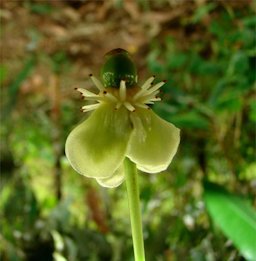 Fig. 6   Fig. 7  G. macrophylla male inflorescence 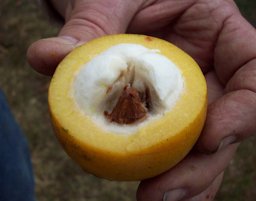 Fig. 8  Cross section showing one of the seeds 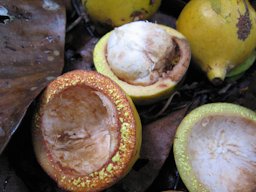 Fig. 9  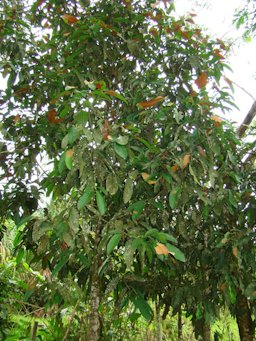 Fig. 10  G. macrophylla, Peru 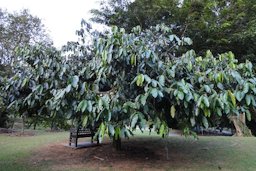 Fig. 11  G. macrophylla tree  Fig. 12  G. macrophylla trunk 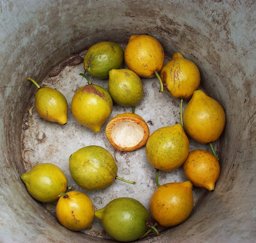 Fig. 13  G. macrophylla fruit |
Scientific
name Garcinia macrophylla Mart. Common names French: garcinia à grandes feuilles; Spanish: achachairú, achachairú grande, chachairu, cahchairu grande (Bolivia), pacuriazú, pacuri-acu (Paraguay), charichuelo, charichula, renaquillo (Peru); Portugese: bacuri, bacuri-da-várzea, bacupari, bacuride cerca, bacuripari, bacuripari-verdadeiro, bacopare bacuripari selvagem, bacurizinho, bacury-pary (Brazil); Suriname: pakoeli; Venezuela: baro ehuhi (Yanomamí ), cotoiba, cozoiba, cozoiba picuda, wadanidi-ishadu (Yekwana ) 2,3,4 Synonyms Garcinia macrophylla (Mart.) Planch. & Triana, Rheedia benthamiana Planch. & Triana, R. magnifica Pittier, R. sagotiana Engl. 3,6 Relatives Madrono (G. madruno), bakupari (G. brasiliensis), bacupari (G. gardneriana), lemon drop mangosteen (G. intermedia), imbe (G. livinstonei), button mangosteen (G. prainiana), gamboge (G. xanthochymus) Family Clusiaceae/Guttiferae (St. John’s wort family) Origin Amazonian lowlands, Suriname; Brazil to northern Peru 2 Uses Fruit Height 16-49 ft (5-15 m) 4 Crown Densely-branched crown 4 Plant habit Pyramidal to sub-cylindrical shape 4 Growth rate Very slow grower; needing 4-5 years to attain 9 ft (3 m) 5 Trunk/bark/branches Rough; dark-brown mottled bark; exudes a yellow latex when cut 4 Leaves Evergreen; simple; stiff; leathery Flowers Unisexual; white; scented; male and female flowers on separate trees 2,3 Fruit Smooth or rough; rounded/conical; thick yellow ring; containing yellow latex (Fig. 9) 2 Season May-Aug./Oct.-Nov. Light requirement Light to moderate shade, tolerates full sun 2,4 Cold tolerance 27-28 °F (-2.78º-2.22º C) Invasive potential * None reported Reading Material Bacuripari, Fruits of Warm Climates There are over 250 Garcinia species, mostly from southeast Asia. Garcinia species from the Americas were once classified as Rheedia, but now all are considered Garcinia. Sorting Garcinia Names, Multilingual Multiscript Plant Name Database, University of Melbourne, Australia ext. link Wherever bacurí, bacuripari or other Rheedia sp. are grown, the flavor is considered excellent. Although not superior to mangosteen in terms of flavor or edible flesh percentage, these other species have better adaptation to varied climatic and edaphic conditions, allowing for their production in many regions. The latex in both of these fruit can be a major obstacle to commercialization, because those unfamiliar with the consumption of these fruit are likely to ingest it, leading to an unpleasant taste experience. Silva (1991) reports that bacurí fruit can be stored a few days after harvest to reduce the amount of latex in the fruit. There has been little selection for superior clones among either bacurí or bacuripari, although there is considerable variation present among seedling trees. 1 Origin The bacuripari is native to the Amazonian lowlands, Suriname and Brazil to northern Peru where it grows as an understory tree. 1 Description The bacuripari is outstanding because it grows and produces a significant crop in shaded conditions (Campbell 1983). The trees are also tolerant of full sun and wind exposure, making them more adaptable to varied climates than the mangosteen. There is considerable variation in fruit quality among bacuripari from different regions of South America, and there may be different species involved. 1 The fruit is not much esteemed but widely eaten and sold in native markets. The bacuripari was introduced into Florida in 1962 and planted at the Agricultural Research and Education Center in Homestead, at Fairchild Tropical Garden and in several private gardens. One tree fruited in 1970, another in 1972, and the latter has continued to bear. 2 Leaves Leaves are stiff, leathery, lanceolate-oblong or broad-lanceolate leaves, 12 to 18 in. (30-45 cm) long and 3 to 7 in. (8-18 cm) wide, pointed at both ends, with numerous lateral, nearly horizontal veins. New foliage is maroon. 2 Flowers The 4-petalled, male and female flowers are home in small axillary clusters on separate trees, the male on delicate stalks to 1 ½ in. (4 cm) long and having numerous stamens, the female on thick, short stalks and sometimes having a few stamens with sterile anthers. In Florida, flowers appear in April and May and a second time in August and September. 2 Fruit Fruit are variable in shape, averaging 1.5-2 in. (4-5 cm) in diameter and 2-2.4 in. (5-6 cm) in length. The fruit have a thick, hard outer wall containing a bitter latex, as in bacurí. Inside the hard shell is a white, creamy flesh surrounding 3 to 4 large seeds. The flesh is scanty in comparison to mangosteen or bacurí. 1 Some 15-to 20-year-old trees have produced 100 to 200 fruits when there have been no adverse weather conditions. 2 Harvest The fruit should be collected from the tree because when they fall, they are over-ripe. 5 Pollination A dioecious species, both male and female forms need to be grown if fruit and seed are required. 2 Propagation Trees are propagated by seed and may require 7 to 10 years to come into production. Seeds have remained viable for 2 to 3 weeks but require several weeks to germinate. 1,2 Food Uses The seed pulp segments are extracted from the fruit and may be eaten fresh, after discarding the seed. The seeless segments are prefered. 5 The white pulp surrounding the seeds is acid- sweet and edible. The pulp can be mashed or blended in water to give a refreshing drink. 4 Other Uses Its wood also makes an attractive cabinet wood, being easily worked and taking a nice polish. 5 Other Edible Garcinia species: Achachairu, G. humilis Bakupari, G. brasiliensis Cherapu (button mangosteen), G. prainiana Gamboge (false mangosteen), G. xanthochymus Imbe (African mangosteen), G. livinstonei Lemon Drop Mangosteen, G. intermedia Madrono, G. madruno List of Growers and Vendors |
| Bibliography 1 Campbell, R. J. "South American fruits deserving further attention." Progress in New Crops, Edited by J. Janick, p. 431-439, 1996, NewCrop™, hort.purdue.edu/newcrop/proceedings1996/V3-431.html. Accessed 14 March 2014. 2 Fruits of Warm Climates. Julia F. Morton, Miami, 1987. 3 Lorenzi, Harri, et al. Brazillian Fruits & Cultivated Exotics (for consuming in natura). Nova Odessa, Instituto Plantarum de Estudos da Flora, 2006. 4 Lim T. K. "Garcinia macrophylla." Edible Medicinal And Non-Medicinal Plants: Volume 2, Fruits, 2012, EPDF, epdf.pub/volume-2-fruits.html. Accessed 29 May 2021. 5 "Food and Fruit bearing forest spedies: Examples from Latin America." FAO Forestry paper 44/3, Food And Agriculture Organization of the United Nations, 1986, FAO, www.fao.org/3/ap368e/ap368e00.pdf. Accessed 29 May 2021. 6 "Garcinia macrophylla." Mansfeld's World Database of Agricultural and Horticultural Crops, mansfeld.ipk-gatersleben.de. Accessed 1 June 2021. Photographs Fig.1,4,8,13 Bronson, Eric. "Garcinia macrophylla." I likE plants! 2009, Flickr, (CC BY 2.0), flickr.com. Accessed 29 Jan. 2015. Fig. 2,3,711,12 Kwan. "Garcinia macrophylla, Clusiaceae." The Plant Observatory, 2010, natureloveyou.sg. Accessed 12 March 2014. Fig. 5 Zavadil, VojtÄ›ch. "Close-up of male flowers." Tropical Plants Database, (CC-BY-SA-3.0,2.5,2.0,1.0), tropical.theferns.info. Accessed 14 Mar. 2017. Fig. 6,10 Huamán, Marleni. "Garcinia macrophylla Mart. Peru." Tropicos Specimen Data, Missouri Botanical Garden, 21 Aug.t 2008, GBIF, (CC BY-NC-SA 3.0), www.gbif.org/occurrence/1257619864. Accessed 29 May 2021. Fig. 9 Sasaki, Denise. "Garcinia macrophylla (Clusiaceae). Specimen D. Sasaki et al. 1130." Plants of the World Online, Facilitated by the Royal Botanic Gardens, POWO, (CC BY 3.0), www.plantsoftheworldonline.org/taxon/urn:lsid:ipni.org:names:428065-1. Accessed 1 June 2021. * UF/IFAS Assessment of Non-native Plants in Florida's Natural Areas Published 12 Mar. 2014 LR. Last update 12 Dec. 2023 LR |
|